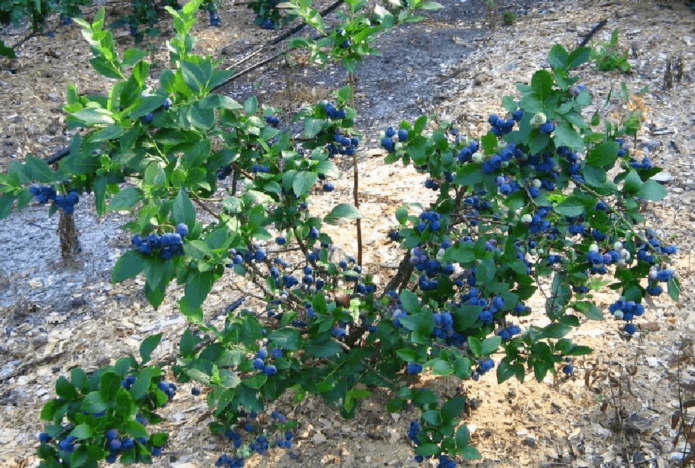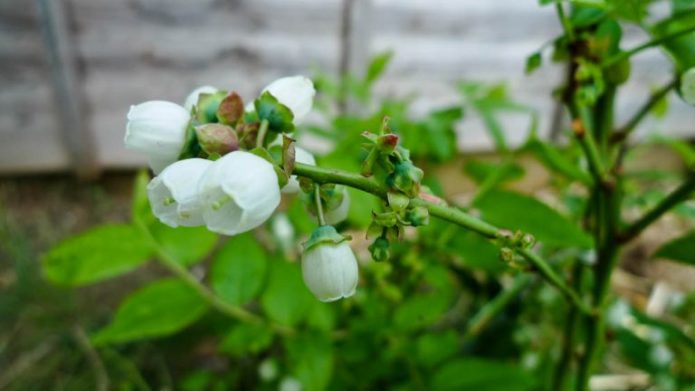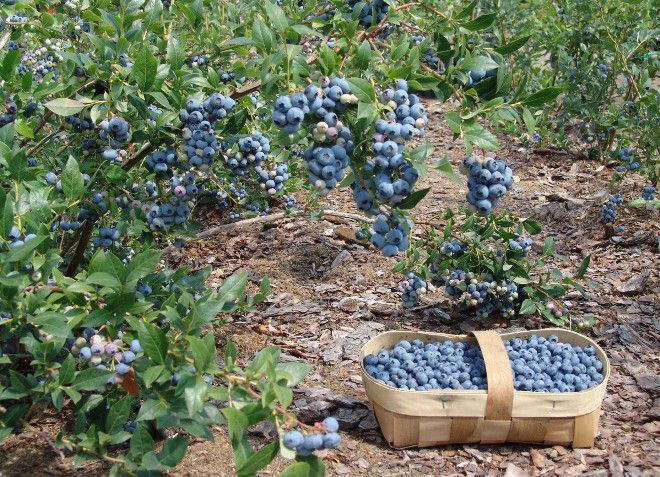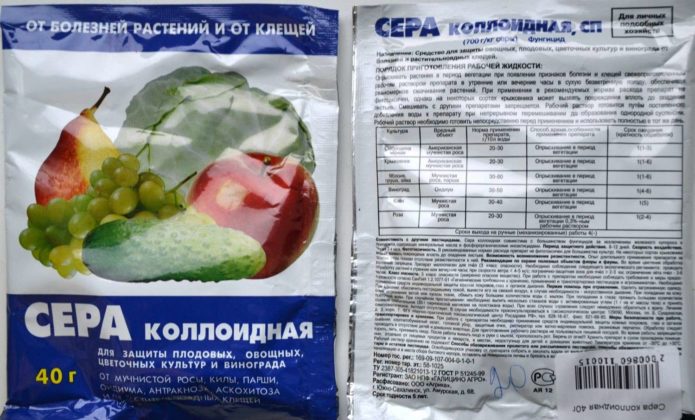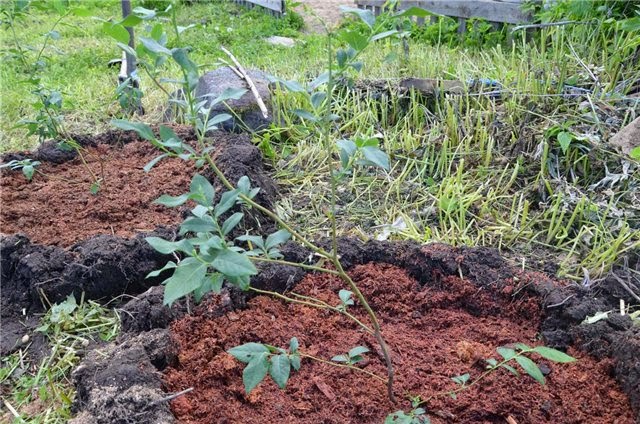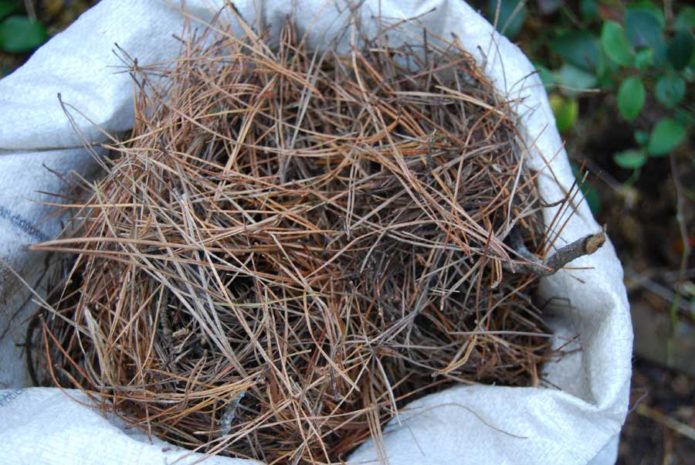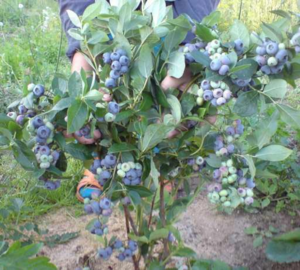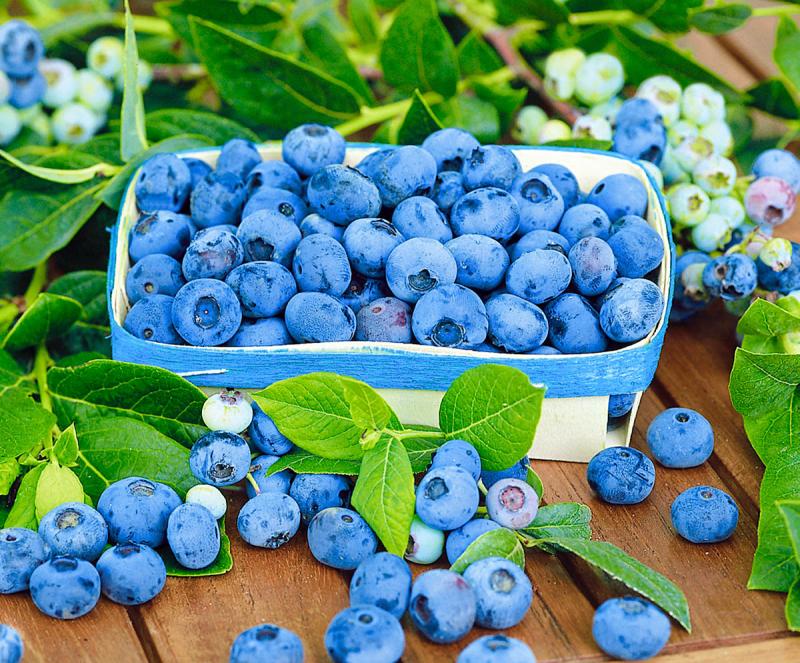The varieties of tall garden blueberry were obtained thanks to the efforts of American breeders of the last century. Some of these varieties have found distribution in our country. Blueberry blueberry is rightfully considered a reference. Let's consider this variety in detail.
Content
History of breeding, description and characteristics of the variety of tall garden blueberries Blyukrop
Some sources claim that the Bluecrop variety of tall blueberries was obtained in 1916 by the American breeder F.V. Kovel. According to Wikipedia and other sources, the variety was introduced into production in 1952, and bred in 1941 by breeders J. Darrow, J. Clark, F. Coville, O. Freeman. It can be concluded that Kovel began breeding the variety (for the period from 1911 to 1916 he managed to get as many as 15 varieties of blueberries on a farm in New Jersey), but other breeders were already introduced into their production, since Kovel died in 1938 year.
After that, the variety got to Europe and the USSR, spread to Russia, Belarus and Ukraine. It was entered into the State Register only in 2018 (applicant and originator of Rassvet LLC, Nizhny Novgorod Region). Zoned in all regions. It can be noted that in the State Register section tall blueberry appeared only in 2017 and so far there are only six varieties of it. Bluecrop is the most famous and beloved variety in Russia; it is considered the standard in our climate.
Blueberry Bluecrop - medium ripening. Usually in central Russia this is the end of July and the whole of August, since the ripening of the berries is not uniform. The bush is medium-sized (according to some sources - vigorous), erect, slightly spreading. The height of the bush is 1.6–2.0 m. The shoots are medium, green, not pubescent. Leaves are dark green, oblong, pointed at the ends, of medium length. Bears fruit on the shoots of the current and last year.
The early maturity of the variety is 3-4 years after planting. Like all blueberry varieties, Bluecrop is self-fertile. Differs in immunity to diseases, has high winter hardiness. Frost resistance - down to –34 ° C (in Poland) and –29–35 ° C (according to American data). The originator informs about the postponed frost of –25 ° C. The variety is resistant to spring return frosts, flowers can withstand up to –7 ° C. Drought resistance is above average.
From a wide variety of blueberry varieties, you can choose the most suitable for your region:https://flowers.bigbadmole.com/en/yagody/sorta-golubiki-sadovoy.html
The berries are large, round, slightly flattened, elastic, collected in medium or long loose fruit clusters. The diameter of the berries is 17–20 mm, weight is 1.4–1.9 g. The skin is dark blue, heavily pubescent, of medium thickness.Berries of high quality, do not crack, suitable for both manual and mechanized harvesting.
The taste is sweet, tart. With early harvest or overloading the harvest, the berries become sour, and can also acquire a characteristic reddish color. More tasty are berries that remain on the bush for 1-2 weeks after ripening.
The yield of the variety is high and regular. From one bush harvested from six to nine kilograms of berries, and from one hectare - 158 centners. Purpose - universal, transportability - good.
Advantages and disadvantages of the variety
As already mentioned, the variety is considered the benchmark among garden blueberry varieties. Its advantages:
- regular and high yields;
- unpretentious care;
- winter hardiness and frost resistance, including flower buds;
- immunity to disease;
- self-fertility;
- early maturity.
- good berry taste and versatility of their use.
The disadvantages with some stretch include:
- extended period of fruiting, which reduces the possibility of wholesale sales. Although for processing and consumption on site, this property can rather be attributed to the merits. And besides, the property of berries to hang on branches for two weeks after ripening without loss of consumer qualities somewhat neutralizes this moment;
- tendency to thicken, which is easily eliminated by regular pruning.
Planting, caring for and growing various varieties of garden blueberries:https://flowers.bigbadmole.com/en/yagody/posadka-uhod-i-vyraschivanie-razlichnyh-sortov-sadovoy-golubiki-otzyvy.html
Video: Blueberry Blueberry Review
Features of planting and growing
The variety is distinguished by good adaptability to soil conditions, but it is still desirable to bring them closer to favorable ones. The requirements are as follows:
- soil acidity at pH 3.5–5.0;
- bedding of soil waters is about 50–70 cm;
- the structure of the soil is loose, well-drained, without long-term stagnation of surface water. Peat bogs, light sandy loam with a thick layer of decayed deciduous litter are best suited. Heavy clay and loamy soils need to be improved (see table below);
- the best soil moisture for blueberries is 60–70% of the total moisture capacity;
- sunny area without shading;
- the presence of wind protection from the north or north-east;
- lack of tall trees near plantings;
- landing pattern - 2.5 × 1.5 m.
Full moisture capacity of soil, water capacity of soil - moisture content in the soil, provided that all pores are completely filled with water. At full soil moisture capacity, moisture in large gaps between soil particles is directly held by a water mirror or a water-resistant layer.
If the selected site does not fully meet the specified requirements, then the gardener's task will be to bring the growing conditions to satisfactory. The following activities are required:
- increasing the acidity of the soil to the desired level;
- creating the desired soil structure;
- ensuring regular watering to maintain constant humidity.
Regulation of soil acidity
In our conditions, most often we are dealing with normal and slightly acidic soils. It is better to start adjusting the acidity level in advance. Most often, colloidal sulfur is used for this - granular or powder:
- sulfur in granules is applied six months or even a year before planting blueberries (since the acidity of the soil changes slowly) between rows or around the bush according to instructions, avoiding overdose;
- sulfur in the form of powder is applied twice a year in spring and autumn, pollinating the site for future planting.
Sometimes gardeners use electrolyte solutions or vinegar to increase the acidity of the soil. In this case, the effect is achieved much faster, but due to the high concentration of substances, beneficial soil microflora and microfauna die. Therefore, this method is not recommended.
You can learn about feeding blueberries with various fertilizers from the article:https://flowers.bigbadmole.com/en/yagody/podkormka-golubiki-sadovoy-vesnoy.html
Less often you have to deal with highly acidic soils. At a pH level of 3.5 and below, they should be deoxidized by adding them 6-12 months before planting fluff lime or dolomite flour in an amount of 400-500 g / m2.
Video: how to properly acidify the soil for blueberries
Preparing a planting pit for blueberries
Prepare the landing pit in advance - at least 2-3 weeks before planting. On favorable soils, the depth and diameter of the pit are chosen equal to 60–70 cm. In the case of heavy loamy soils, its diameter should be doubled, and the depth should be reduced to 50 cm, and a drainage layer 10–15 cm thick will need to be laid on the bottom. crushed stone, pebbles, broken brick, etc. After that the pit is filled with a nutrient mixture.
Table: the composition of the soil mixture for blueberries in various soils
| Soil type | Soil mixture |
| Light loam, sandy loam | High sour peat and river sand in a ratio of 3: 1 |
| Peat soils | Garden soil and 2-3 buckets of coarse river sand |
| Chernozem with neutral reaction | Chernozem and sour peat in a 1: 1 ratio |
| Heavy clay soils | High sour peat, garden soil and coarse sand in a ratio of 3: 1: 1 |
In addition, 200–300 g of phosphate rock should be added to any of these mixtures, which will provide the plant with phosphorus for the next 5–6 years.
Planting blueberries Bluecrop
Since blueberry seedlings are usually sold in containers with a closed root system, planting dates can be any - from April to October. Still, you should prefer spring planting, since in this case, by winter, the plant will better settle in a new place for it and its winter hardiness will be higher. Before planting, the seedling must be watered with water.
The landing order is as follows:
- The blueberries are removed from the container with a lump of earth, the net is cut - if any - and straightened carefully, being careful not to sprinkle the substrate from the roots.
- A seedling is planted in a prepared hole, slightly deepening (2-3 cm).
- After compaction of the soil and creating a near-stem circle, the plant is watered and mulched with coniferous needles or sawdust.
- Extra weak shoots are cut out, leaving several powerful, upright growing, which are shortened by 30-50%.
Care and cultivation
In the future, blueberry care is not difficult. Let's outline the main points briefly.
Watering and mulching
Particular attention should be paid to regular watering, since although the Bluecrop variety is drought-resistant, the gardener will achieve the best results while maintaining the desired moisture level. The most convenient, of course, is to use a drip irrigation system for this purpose. With regular replenishment of the mulch layer, the necessary moisture will be provided, the absence of weeds, and it will not be necessary to frequently loosen the soil. And also mulch is a source of nutrients.
Top dressing
When coniferous sawdust decomposes from the soil, nitrogen is intensively consumed, so it should be added periodically. This is best done with ammonium sulfate, which does not contain nitrogen in the nitrate form, dissolves well in water and is absorbed by the plant. And besides, this fertilizer, which contains sulfur, acidifies the soil. The seasonal need for it depends on the age of the plant - 30 grams in the first year, 130 grams for an eight-year-old plant. The total amount is applied in three times:
- the first time when the buds open,
- the second - after flowering,
- the third is in mid-June.
The source of phosphorus - phosphate rock - is applied annually starting from the fifth year after planting (subject to its introduction into the planting pit, as mentioned above). Consumption - 60-80 g / m2... Potassium is applied in the form of sulfate in the first half of summer along with irrigation. Norm - 10–20 g / m22... Divide this dose into 2-3 times with an interval of 1-2 weeks.
Compositions of complex mineral fertilizers for heather are popular. Having a number of minerals and trace elements in their composition, they can either supplement conventional fertilizers or completely replace them. More often than others, complex fertilizers of the AVA, Dobraya Sila, Florovit, Ogorod 2001 trademarks are used for blueberries in accordance with the attached recommendations and manufacturer's instructions.
Photo Gallery: Basic Fertilizers for Blueberries
- Ammonium sulfate is the best nitrogen source for blueberries
- Potassium sulfate is needed for the growth and ripening of blueberries
- Phosphorite flour for blueberries is brought in in the fall
- Complex fertilizer for blueberries "Good Power" can be used for both root and foliar feeding
- Florovit - a well-known and tested Polish fertilizer for blueberries
- Ogrod 2001 - long-acting granular fertilizer for blueberries
Blueberry Pruning Bluecrop
In the first 3-4 years after planting, the lower shoots (shoots) are cut, which helps to strengthen the main branches. In the future, the bush should be regularly thinned out. At the same time, branches growing inward are removed, in addition, dry and damaged shoots are cut out. As a result, a bush is formed of 10-15 strong shoots, the rest are regularly cut out. Gradually replace old lignified branches with new young shoots growing from the root. The Bluecrop variety responds well to such rejuvenation with a high yield.
Reviews
Bluecrop is a handsome man, considered the standard of tall blueberry varieties. I have been growing for two years. A bush with good vigor, large berry, best of all gains flavor after lying in the refrigerator for a while. After the winter of 2012, it was almost frostbitten and gave a good harvest.
Bluecrop is smart and my favorite. It did not form it, it itself grew with a more raised crown than the others. And although it seems to me that more berries are knitted on the lower branches, in the rest of the varieties I will still cut them in the fall, since it is inconvenient to take care of the bushes and the branches lie on the mulch under the weight of the berries.
It’s my third summer. The soil from the neighboring deciduous forest, similar to peat, was taken near a forest stream, in half with my sandy loam and a lot of coniferous litter and cones. And a thick layer of chocolate - again, coniferous mulch, since there is a lot of it. I mulch abundantly twice a year, because it has time to decompose.
We really like the existing Bluecrop variety, however, the harsh winter before last suffered a little, but after all, the temperature of -34 ° C lasted 8 days, and there was no snow, I then mentally said goodbye to many of my plants, but, thank God, most survived, including and Blukrop.
Make the correct selection according to your climates. More Bluecrop (this is a reliable blueberry horse), well, the rest is winter-hardy and lower so that the snow covers well. Your winters are still normal, not like ours. And do not press space for the plantation.
As for the fact that there are not many berries, I disagree with you. An adult Bluecrop bush gives up to 9 kg per season. I saw myself on blueberry plantations, including in Belarus, for example, at Ruban N.N. in Gantsevichi.
Bluecrop is fruitful, but so that it is not sour, you need to let the blue berries hang on the bush for two weeks. According to Bluecrop, it is not clear, such an advertised variety, but inferior in taste and berry size to my other varieties. This year I was buying seedlings from Poland, because Bluecrop was more expensive than Patriot. Unclear. This is all because of the yield, such a stir with him ?! In general, this is not the best option for home planting.
Blueberry Bluecrop is practically devoid of flaws. Its high popularity among farmers and gardeners is due to its unpretentious care, yield and high commercial quality of berries. When choosing a variety for planting, first of all, it is worth stopping at this American beauty.
